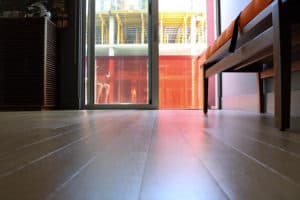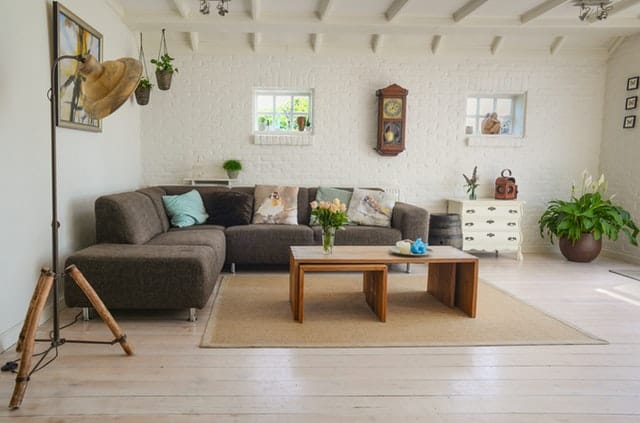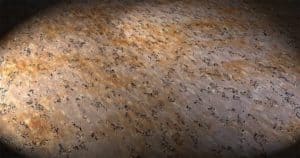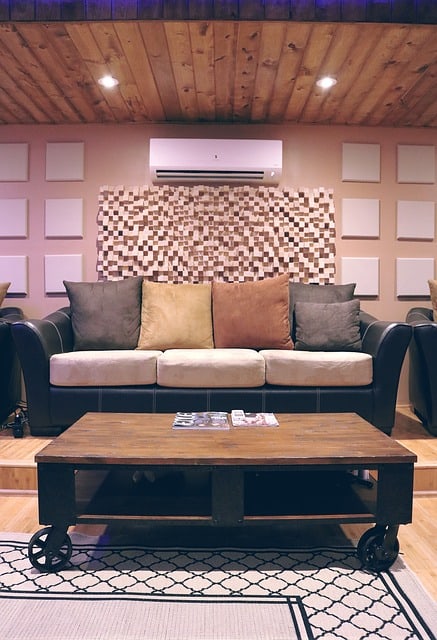
In this article, we are going to talk about how to reduce unwanted echo inside a room. Before we come to reduce the echoes, there are some things that we need to understand.
We will go through: how an echo is produced, the reflective materials that will help produce the echoes, and how we can implement echo solutions.
How is an echo formed?
Echo is produced due to the reflection of the sound waves from any reflective material.
Surfaces that reflect sounds will include but not limited to:
- Walls
- Floors
- High Ceilings
- Types of Furniture
- Highly Polished Surfaces
- Windows
- Decorative Wall Hangings e.g., Glass-Framed Artwork
Long echoes generally stem from acoustics bouncing:
- From wall to wall
- From floor to ceiling
Note: It is formed due to the difference in the time period between the initial waves and the reflected waves reaching our ears.
Hardwood floors will cause intensive echoes inside your room with the ceiling. It’s important to have the back of your mind that hardwood floors might not be the only thing causing the echo. There may be others aiding it.
By the way, if you already know these things, then you can jump right to the “How to” part.
Producing or presenting echo inside a room depends on other factors such as the room’s dimensions, the type of walls and floors, the type of furniture, etc.
You need to take these things into account if you are trying to reduce echo inside your room.
How to dampen these reflected sound waves?
We should know that sound waves are mainly reflected by polished surfaces present inside the room. And these sound waves should travel for a distance before reaching our ears.
This will create a difference in the time period before reaching our ears, which is important for producing an echo.
If you have a big room, the echo will be produced for sure, and it cannot be enjoyable if you are trying to record your vocals or anything.
We can reduce the echo inside the room if we prevent these things from happening. So, it would help if you were having some ideas now.
Now, hard and polished materials are very reflective in nature, and they will aid in producing echo inside your room. Some examples are the hardwood floors, wooden furniture, leather coverings, etc.
Either you remove and replace them with non – reflective ones or add other sound materials to combat the reflected waves. Upholstered furniture will be absorbant in nature for sounds.
You should know that soft and rugged materials are natural sound absorbers. If you add them inside your room, it will absorb the sound waves, including the reflected ones.
Adding them too much will lead to an arid environment, which will ruin everything. Therefore balancing it to the desired level is a must.
We will reduce some of the reflecting materials, replace them with soft materials, or add sound-deadening materials.
We might even do a mixture of them according to your desired environment.
Best Ways to Reduce Echo in a Room With Hardwood Floors
1.Using everyday Common materials –

You can reduce echo in a room cheaply and don’t require any technical stuff or knowledge. First of all, the most important thing is to cover up some of the reflecting surfaces like your hardwood floor.
You can use rugs to cover some of the portions of the floor. If you want to cover the whole room, then you could do it. But I think it won’t be a necessary thing.
As some of the portions would be covered up by furniture and other things. Now, if you have a large empty room, then this won’t be enough. You have to take care of the bare walls too.
You can do two things with the walls; you either hang a thick curtain to cover the empty walls or bring in furniture like bookshelves, tables, etc.
Don’t forget to arrange the books on the shelf in a Zig-Zag manner. This will act as a diffuser and make the reflections go in different directions to make it more natural.
Canvas and other decorative materials can also be hanged on the walls as long as they are soft and have sound-absorbing property.
Remember, “SOFT and THICK” materials are the best DIY sound absorbers, and you can add anything that fits the description.
Some of them are cushions, pillows, mattresses, carpets, rugs, soft fabrics on your furniture, etc.
2.Covering or Replacing the Floor –

You can cover up or replace the hardwood floors with Cork Floors and Vinyl tiles. These types of floors are good sound absorbers as compared to hardwood floors.
The reflecting capacity is deficient compared to that of hardwood floors. Cork Floors has the most sound absorbing capacity and is used in studios.
It is good with the feet too. Installing the cork floors is not a tough thing, but you need some knowledge of it. And you should probably hire a professional to do it.
The same goes for the Vinyl flooring too. And the best part is that you can choose from a wide range of textures and colors that will go with your room’s design.
On the other hand, if you are building a recording studio, you should look at some of the Best floorings for a studio
.
Note: If you are doing this for your recording studio, you don’t need to replace it. Hardwood floors are more natural and comfortable for recording vocals and instruments. You can do Acoustic Treatment instead.
3.Using Dedicated Sound Absorbing Materials –

You can reduce the echo inside your room using sound-absorbing materials such as foams, diffusers, acoustic foam panels, etc. Taking this route will come closer to that of a treated room.
You have to install the acoustic foams on the opposite walls to prevent sound waves from reverberating between the walls. You can even add diffusers to one of the walls.
This will make the sound waves reflect in all directions symmetrically and make it more natural. But before you add the diffusers, check if you can manage without using only the acoustic foams or panels.
You can do this by making a noise like shouting “Hello” or clapping inside the room, and check if the echo is still there or not.
The number of foams or panels you have to use will depend on your room, and I can’t say the exact amount. You have to check it yourself as you go with the process.
Please know that reflections are necessary too inside a room to make it sound natural. Don’t dampen it more than the needed level.
The best way for room echo cancellation is to do a mixture of the three ways that I have mentioned and go until the echo is removed from the room.
Want to know more about soundproofing?? Check out my post on Soundproofing a whole room.
With this, the noise and echo reduction in a room with hardwood floors has come to an end. Do check out my other articles on soundproofing, acoustic treatment, etc.
For more information, check out my article about why recording studios have wood floors.
Recent Posts
QuickTime is a vital app for many Mac users, and if you’ve recently bought a new microphone, you might wonder how to use it optimally. QuickTime cannot record audio content if it doesn’t have...
Every microphone leaves a unique signature on the quality of its output. If you’re a podcaster trying to melt your way into your audience’s hearts, a muddy, distorted recording won’t cut it....
